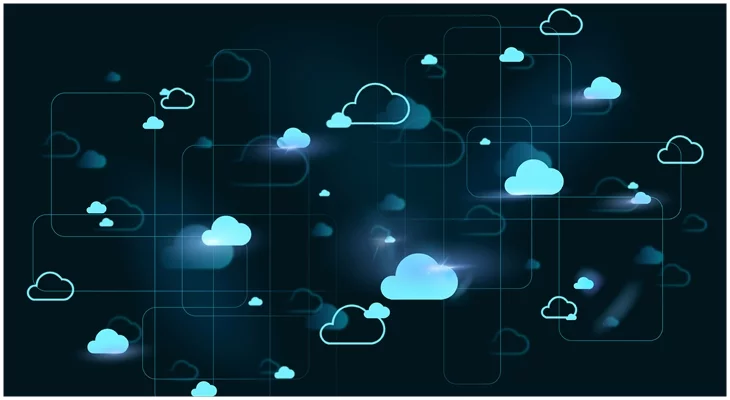Edge and Cloud computing for IoT: An Introduction
Edge and Cloud computing for IoT is now used for a wide range of applications. This blog aims to shed light on some of the key roles of edge and cloud computing in IoT.
In today's IoT landscape, edge computing serves a variety of purposes. This distributed, local computing paradigm frees IoT devices from latency and connectivity issues. These issues would otherwise prevent some IoT applications from being realized.
This critical technology is at the heart of IoT applications that involve classified data, real-time or low-latency decision making. It is also helpful for applications that take place in environments where cloud connectivity is sparse or non-existent, and are particularly data-intensive, such as in industrial IoT implementations.
There is no latency because edge computing devices analyze data in-house. This can make/break the functionality of IoT devices for precision time-sensitive tasks. Edge computing is a cost-effective, efficient, secure, and private way to use the IoT. Edge computing also adds a layer of redundancy and resilience to mission-critical tasks.
Below are some key roles of Edge and Cloud computing in IoT technology.
- Role of Edge Computing in the Internet of Things
- Role of Cloud Computing in the Internet of Things
- Reduced Ownership Costs
- Programs To Ensure Business Continuity
- The Cloud Is a Remote Processing Power Source
- The Cloud Improves Iot Data Security And Privacy
- There is no Need for On-Premises Hosting
- Improved Device-To-Device Communication
- Reduced Ownership Costs
- Programs To Ensure Business Continuity
- Low Barrier to Entry
- Communication Between Devices
Role of Edge Computing in the Internet of Things
Latency
Many IoT applications have advanced monitoring systems. These systems collect data, analyze it, and take action based on the findings. This is sometimes done only when a specific interaction with the device is triggered. When these insights are required in real-time, edge computing can help IoT. Data collection and analytics take place at a closer location that is closer to the IoT device. Rather than a large centralized data center, it is within the same country or region. The round trip to the data center and back is shorter, network latency becomes minimal. Edge computing can also improve IoT applications that need real-time actions.
Bandwidth
Many IoT devices send small data packets back to a data management platform. It then runs analytics to extract insights. At the moment, data is streamed to a platform in a centralized cloud. With an increase in the number of connected devices, operators' networks may face significant strain in the future. Even if individual data packets are only a few bytes, when they are streamed in real-time from a large number of devices in a small geographic area, the cumulative effect could be enormous. Edge computing can bring IoT data processing and filter closer to the devices. It would thus reduce bandwidth usage. It can do so by ensuring that only data required for longer-term storage or analysis is sent to a central management platform.
Security
How to manage security as more and more devices are connected is a major issue for many in the IoT ecosystem. Malware can be used to use IoT devices to launch DDoS attacks. While edge computing is unlikely to be more secure than a private cloud, it does have the advantage of being more local. Edge computing can provide some security benefits for companies concerned about storing data in locations that have different data protection laws than where the data is generated. Companies can also ensure that data never leaves their local perimeter. Moreover, they can control all access to the servers storing the information, especially if the edge servers are on-premises.
Role of Cloud Computing in the Internet of Things
The underlying concept behind IoT and Cloud computing is to improve efficiency in day-to-day tasks. It aims to achieve this without compromising the quality of data stored or transferred. Because the relationship is reciprocal, both services complement each other. The IoT becomes the source of data, with the Cloud serving as the ultimate storage location.
As the years pass, we will witness many changes. Some of these changes will be gradual, while others will be more rapid. Amazon AWS, Google, and Microsoft are also emerging as undisputed leaders in Cloud IoT Services. They are also making the challenge all the more worthwhile.
As the Cloud gains traction, many Cloud service providers are offering pay-per-use models to businesses. Businesses will only have to pay for the computer resources they use in this manner.
Reduced Ownership Costs
Inflation is a never-ending threat that every business must deal with at some point. Businesses can get a lot of resources from the Cloud. They don't have to spend a lot of money setting up their infrastructure. The IT department is also more focused on day-to-day upkeep activities in the absence of on-site systems, hardware, and software. This is an obvious benefit of the Cloud.
Programs To Ensure Business Continuity
Even in the face of unexpected disasters, cloud computing can keep businesses running. There is no immediate danger to the private data because it is stored on extra separate servers. This makes the Cloud an indispensable part of Internet-based businesses.
The Cloud Is a Remote Processing Power Source
On-premises infrastructure is becoming less and less of a viable option. With the use of IoT devices, a massive amount of big data keeps getting generated. This necessitates a large storage system and fast processing. In this case, the cloud offers a large amount of storage space. The cloud also aids developers in offloading the fast computing process with 5G.
The Cloud Improves Iot Data Security And Privacy
The IoT entails massive data generation. When it comes to dealing with data, the issue of data security and privacy arises. Also, the Internet of Things (IoT) makes use of mobility. We can expect more preventive, corrective, and detective measures as a result of cloud intervention. The cloud provides users with strong security measures. It is all thanks to effective authentication and encryption protocols.
There is no Need for On-Premises Hosting
For IoT devices, plug-and-play hosting services are essential. Large equipment or hardware helps for plug-and-play hosting services. For organizations or individuals, this is a very costly event. You don't need to rely on massive equipment with the combined power of IoT and cloud computing. Cloud computing provides a ready-to-use model. This model eliminates any entry barriers for IoT hosting providers.
Improved Device-To-Device Communication
With its powerful APIs for the IoT, the cloud acts as a communication facilitator. These APIs also make it simple to connect smart devices. Inter-device communication became easier as a result of this.
Reduced Ownership Costs
Cloud computing eliminates the need for businesses to set up infrastructure. It also provides them with ample resources. As a result, it saves a significant amount of money on infrastructure setup. Furthermore, because the cloud has no concept of on-site systems, hardware, or software, IT departments become more focused on their day-to-day operations.
Programs To Ensure Business Continuity
Even if unexpected disasters occur during the process, cloud computing ensures business continuity. Also, storing data on separate servers reduces the risk of data loss. This is critical in the case of IoT-based infrastructure.
Low Barrier to Entry
IoT innovations need easy-to-use hosting solutions. For this, cloud computing in the IoT is a viable option. IoT players can use cloud computing to tap into the power of remote data centers. They can do this without having to invest in on-premises hardware and software. When talking about cost, cloud computing in the IoT is an excellent option. In cloud computing, users have to pay as they go. This saves a lot of money upfront.
As a result, businesses can install large-scale IoT initiatives with ease. For most IoT-based businesses, this lowers the entry barrier.
Communication Between Devices
In the Internet of Things, cloud computing enables seamless communication between IoT devices. This enables a wide range of robust APIs that interact with connected and smart devices. Cloud computing paves the way for the development of connected technologies.
Conclusion
The mix of IoT and cloud computing foreshadows the next big thing after the internet. Also, we can see new applications emerge as a result of the integration of IoT and cloud computing services. These applications are also opening up new business and research opportunities. As a result, we can expect that the combination of IoT and cloud will result in a paradigm shift in multi-networking and open services platforms.
Also, without edge computing, IoT can now be used for a wide range of applications. But, as more devices become connected, and as we investigate use cases with even tighter latency, bandwidth, and security requirements, edge computing may become a key enabler.
This blog aims at covering the benefits of Edge and Cloud computing in IoT. Now you have to decide which better suits your business. Without any doubt, Edge and Cloud computing in IoT are the future of IoT technology.
You may like to read:
Security Issues Concerning IoT and Their Solutions
Telematics and the Internet of Things to Better Manage Your Fleet
5G in Industrial Manufacturing: How Is It Transforming The Industry
Zigbee On The Internet Of Things: Advantages And Disadvantages





